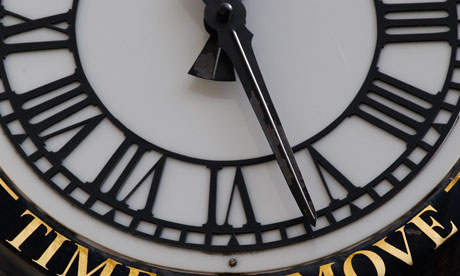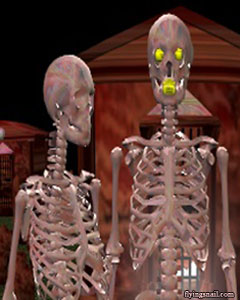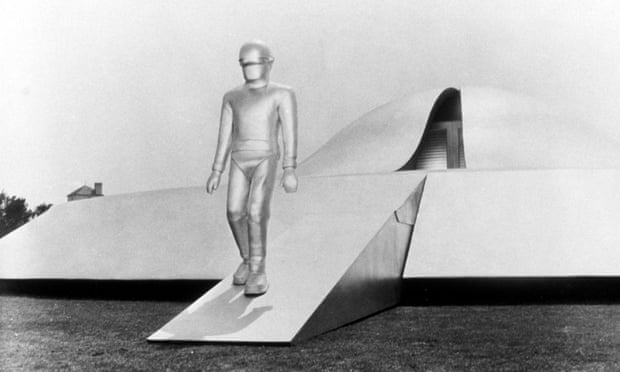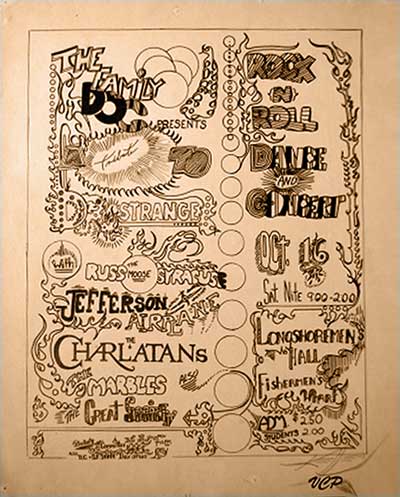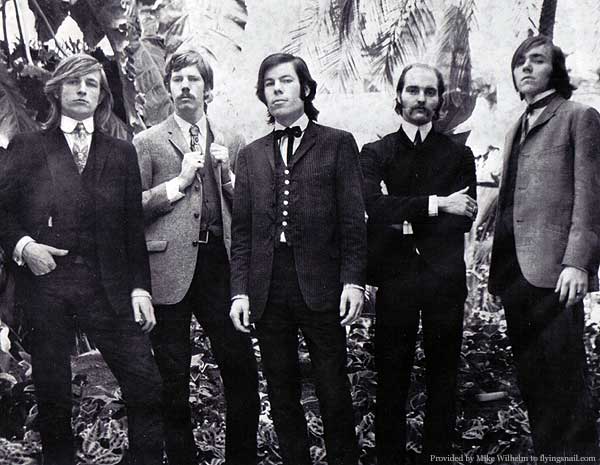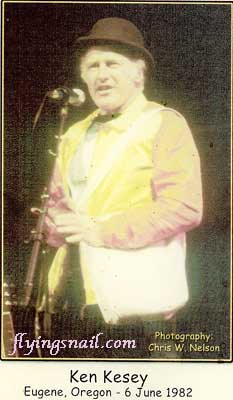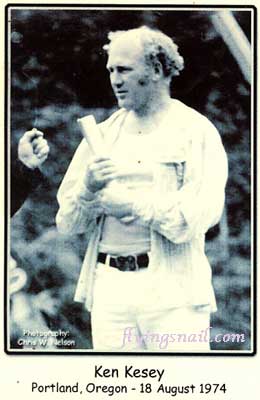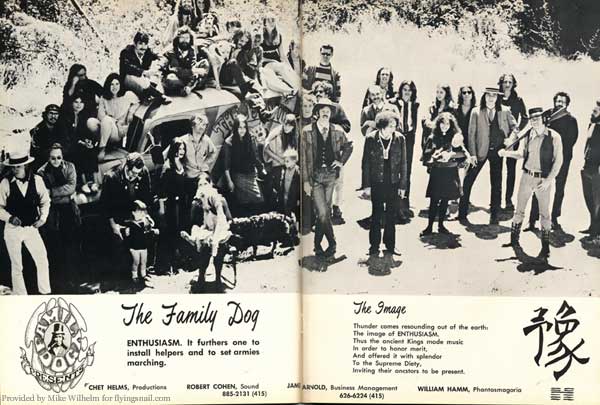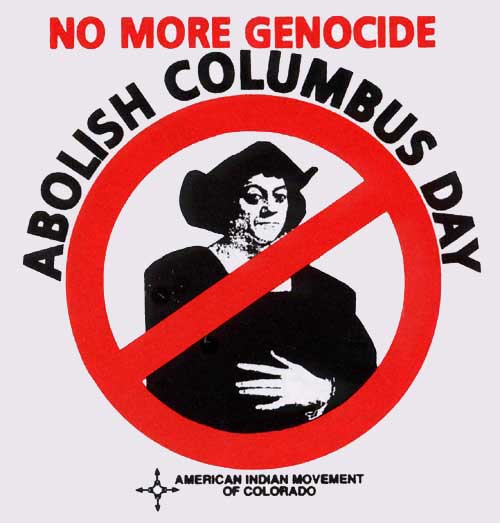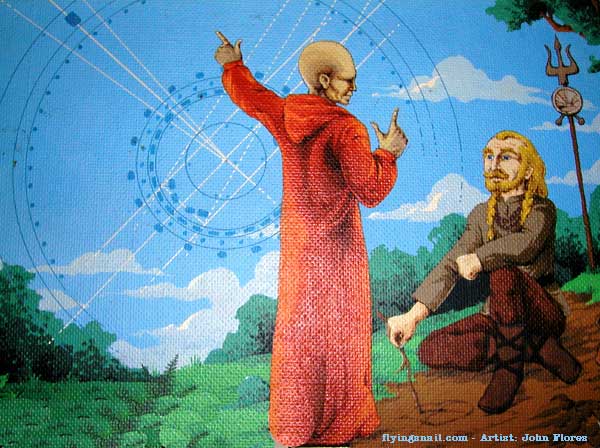Should we drop
daylight savings time?Last week the UK changed the clocks, and this weekend it's time for the US to do the same. But a substantial amount of research suggests daylight saving time may not be beneficial – and in fact, might be harmful. Is it worth keeping?
theguardian.com, Friday 1 November 2013 14.30 EDT, Article Source
Is daylight savings time outdated? Photograph: Darren Staples/ReutersShould we no longer have daylight savings time?
68% = YES and 32% = NOThis poll is now closed
Cree Prophecy
Only after the last tree has been cut down,
Only after the last river has been poisoned,
Only after the last fish has been caught,
Only then will you find money cannot be eaten.
Senate passes controversial
cybersecurity bill Cisa 74 to 21Senate votes in favor of bill critics including Edward Snowden say will allow the government to collect sensitive personal data unchecked [Dianne Feinstein pictured in article photograph ] [Click to continue reading] ... [Click to continue reading]
Apple faces class action lawsuit
over Wi-Fi assist data usageCompany faces lawsuit alleging $5m damages for feature which uses mobile data when Wi-Fi is underperforming [Click to continue reading]
10 things South Park has taught
us about gentrificationThe mayor is backing the redevelopment of South Park’s eyesore neighbourhood into ‘SoDo SoPa’ – but Kenny’s father is not impressed. Kids, it’s time to get with the gentrification programme ... [Click to continue reading]
Dahbud Mensch ~ is SANITY the PLAYGROUND of the unIMAGINATIVE ?
Corporate Property Rape
Valley Fire: Photographs & Story
Dahbud's old place and top of Cobb Mountain
[Click to continue viewing Valley Fire photographs and story]PG&E executives took money intended for San Bruno gas pipeline improvements and spent it on executive bonuses and shareholder dividends; ultimately causing death and destruction to the people. Do you really think they care about Lake County residents?
Time For a Corporate Death Penalty?
David Garrett & Valentina Babor, "They don't care about us" from Violeczki
https://vimeo.com/142052052PG&E, corporate criminal
The utility likes to pretend it's a good corporate citizen – but the record shows otherwise.
By Savannah Blackwell, Article source
WHEN IRISH IMMIGRANTS arrived on San Francisco's shores during the first few decades of the past century, it wasn't easy for them to find decent, stable jobs. John Hanley, the president of the local firefighters union, likes to say that for many the only options were the police department, the fire department and Pacific Gas and Electric Co.
PG&E has played hard on its reputation from those days, using stories like Hanley's to push blue-collar workers to oppose public power. The company has spent millions on other public relations efforts: for years, PG&E representatives talked about all the widows and orphans who were living off company stock, and hyped the money the company gave to local charities.
But the image of PG&E as a fine, benevolent, and upstanding corporate citizen is long gone.
Today, with PG&E's stock in free fall, the small shareholders who had hoped to use the utility's stock as part of their retirement income are in trouble – while the same executives who drove the company into bankruptcy are earning multimillion-dollar bonuses.
The charitable contributions that once helped buy PG&E political protection have dried up.
And over the past few years, PG&E's most lasting legacy has become that of a corporate criminal.
Consider:
• In 1997 PG&E was tried and convicted in criminal court for endangering the lives and property of gold country residents by failing to trim tree branches near electrical wires frequently enough to prevent major fires. Evidence showed that PG&E executives had diverted tree-trimming money to fatten profits and salaries of top corporate executives.
• The story of the company's poisoning of community water supplies in Hinkley became a major Hollywood movie called Erin Brockovich, and a similar environmental disaster is still underway just south of San Francisco. Meanwhile, residents of the Bayview-Hunters Point district in San Francisco are suffering from alarmingly high rates of asthma and other illnesses that they link to PG&E's dirty power plant in the neighborhood (see "Poison Power," 1/28/98). In addition, the nearby Potrero power plant, which PG&E sold to Mirant Corp. in 1998, is scheduled for expansion.
• PG&E stole nearly $200,000 from San Francisco by illegally running its power lines to the Presidio, according to a 1995 lawsuit the city filed against the company. Indeed, PG&E's service to San Francisco residents is illegal, according to the terms of the 1913 Raker Act, which requires the city to operate a public power system. The company's monopoly has led to decades of structural corruption at City Hall (see "How PG&E Wires the City," page 26).
• In 1998 a major blackout hit the city – leaving nearly half a million San Francisco residents without electricity (see "Still in the Dark," 12/16/98). Officials determined that a failure to make a key backup safety check at a San Mateo substation caused the outage. For several years the company had been cutting back on maintenance staff to fatten profits.
• In 2001, after lobbying for the 1996 bill that deregulated part of the state's electricity industry, PG&E shuffled off more than $600 million in profits to its holding company, gave its top brass $50 million in bonuses and raises, and declared bankruptcy. Since spring 2001, rates have soared 40 percent and customer service for everything from hook-ups to billing problems has worsened (see "Feeling the Crunch," 9/4/02).
• Under its proposed plan to get out of bankruptcy, PG&E wants to free itself of the last vestiges of state regulation while at the same time making a very anti-free market demand: ratepayers must protect its shareholders and CEOs from any potential future losses (see "Competing Energy Visions," page 30).
• PG&E has a long record of harassing internal whistle-blowers and reporters who dare to take on the giant company.
When former presidential candidate Ralph Nader talked to reporters at an Oct. 8 forum at the Commonwealth Club of California, he slammed the company's business practices: "PG&E was caught up in the whole deregulation scam, which it helped frame and get through the [California] legislature unanimously. [It] promised that rates would be reduced by 2000. Instead, PG&E has been caught up in a wild gyration of transforming the electricity industry into a speculative commodity marked by secret deals and collusion, which is just now being exposed by government investigators and newspaper reporters. Nader was at the club to support fellow Green party candidate Peter Camejo in his bid for governor.
"I think on the philosophy of 'Three Strikes, You're Out,' there have been more than three strikes. [The company] should be subject to eminent domain and takeover by a public power entity to establish lower rates, cleaner energy, and the more focused efficiency we've learned to expect from the better-run public power districts in California."
Burning down the houses
In 1994 a disastrous wildfire struck the community of Rough and Ready in Nevada County, scorching 500 acres, destroying a dozen homes, burning a historic schoolhouse down to the ground, and running up $2 million in damages. Residents, some of whom lost everything they owned, literally had to run for their lives.
The local district attorney was livid: the fire was started by tree branches brushing against high-voltage PG&E lines – and for years California forestry officials had been telling the company to cut back those tree limbs. In 1997, D.A. Michael Ferguson, in an unusual move, took the corporation to criminal court, charging it with 746 counts of violating the state law requiring the utility to maintain safe clearance around power lines. Ferguson accused PG&E of a chronic and widespread pattern of negligence that resulted in the 1994 fire (see "Burning Secrets," 3/12/97, and "The People v. PG&E," 4/2/97).
PG&E brought in the big guns. The company hired former U.S. prosecutor Joseph Russoniello to defend its actions. But a quiet, determined assistant D.A. named Jenny Ross, who had practiced in San Francisco with Pillsbury Madison and Sutro, prevailed with the jury. The company was found guilty of 739 counts of criminal negligence and fined $2 million.
The evidence brought forward by the prosecutor was overwhelming. With the help of utility analyst Bill Marcus of Sacramento, Ross showed how PG&E had taken $80 million from ratepayers between 1987 to 1994 that was supposed to pay for tree trimming. Instead, the company used it to pad profits and ensure hefty salaries for CEOs at a time when it was trying to make up for losses incurred from the screwed-up construction of the Diablo Canyon nuclear power plant. PG&E had raked in more than $1 billion in profits the year prior to the fire.
Ross presented loads of documents (which PG&E fought fiercely to keep confidential) – including personal e-mails between staffers – in which it was clear PG&E's brass had made a fatal decision to save money by drastically cutting back on tree-trimming staff. PG&E's managers even mocked the forestry officials for their constant warnings of danger.
The California Public Utilities Commission, whose officials were angry PG&E had hoodwinked them during rate cases involving the tree-trimming money, took up the matter and fined the company $29 million in 1999.
Nevada County wasn't the only site of major fires caused by PG&E. In fact, California Department of Forestry officials told us in 1997 that PG&E's failure to trim overgrown trees had caused some 760 fires.
In 1997 a devastating fire in Los Gatos was caused by molten aluminum particles spewing from a PG&E power pole. Although PG&E was never charged with a crime, the company agreed to pay the full cost – $2.5 million – of the fire.
Poisoning the water
Not many utility companies have been the subject of major Hollywood films. But in 2000, director Steven Soderbergh released a blockbuster about the illnesses and deaths in Hinkley, a Mojave Desert town of 3,500, and how a rough-and-tumble law-firm clerk named Erin Brockovich forced the company into what was the largest class-action settlement of its time: $333 million.
The rampant sickness in the community was tied to exposure to chromium 6 prevalent in the groundwater. PG&E, which owned a natural-gas pumping station on about 20 acres near the town, never acknowledged direct responsibility for the illnesses. Runoff from the station, which also contained chromium 6, was stored in unlined wastewater ponds. The corporation knew the ponds were leaking into the water supply.
In Daly City, residents living in Midway Village, a 150-unit federally subsidized housing development, have for years suffered unexplained headaches and high rates of cancer, as well as skin disorders and neurological problems. They found out they were living amid toxic waste from lampblack (a kind of carbon) and coal tar in their yards and under the property directly next door, which PG&E owns as part of its Martin Service Center. The stuff had been there for at least 100 years – left behind by a gas manufacturing plant. Residents charged that PG&E had known for more than 15 years that residents were being exposed to dangerous carcinogens such as benzoapyrene and other petroleum-based cancer-causing toxins yet did nothing to warn residents or sufficiently clean up the mess. In 1980, state records showed, PG&E workers even complained to the U.S. Environmental Protection Agency about the problem, and some of the waste was removed.
Ten years later, the first set of residents sued PG&E. Eventually, 180 plaintiffs accused the company of endangering their health. In 1997, San Mateo County Superior Court Judge Joseph Bergeron dismissed the case, saying that residents hadn't proved a direct link between their illnesses and the chemicals in the soil. The residents appealed. In 2000 the state Court of Appeals upheld the superior court judge's findings and threw out the residents' suit. Now residents are focusing on trying to force state officials, who removed more contaminated soil in 2001, to compensate them for the costs of treating their illnesses and to pay to relocate them.
"From Bayview-Hunters Point to Midway Village and other communities, you see a pattern of PG&E putting corporate greed above the health of people impacted by their operations," Bradley Angel, director of Greenaction, an environmental justice group based in San Francisco, told us. Angel said it was only in the past few weeks that environmental and Native American activists, with the help of a bill authored by state assembly member Fred Keeley and signed by Gov. Gray Davis, succeeded in stopping PG&E's plans to send radioactive waste to Ward Valley. "We see a pattern of threats to community health as well as a pattern of environmental racism and injustice."
These are just a few examples of PG&E's blatant disregard for public health and safety. There are numerous others: For example, in 1997 Sonoma County settled a case against PG&E in which the district attorney alleged that the company's Geysers geothermal plant emitted hydrogen sulfide at levels higher than the law allowed (see "Another Step Forward," 3/19/97). That same year a Santa Clara jury awarded $30 million to the family of seven-year-old Cole Behr. The family claimed that Behr, who can barely walk and cannot speak, was born with brain damage because his mother, Cynthia, was exposed to carbon monoxide related to PG&E's gas service when the dangerous chemical infiltrated the heating system of a San Jose office building where she worked when she was pregnant.
Cheating the city
PG&E never should have delivered power to San Francisco. But even the terms under which it breaks the federal Raker Act are unfair. Since 1939, PG&E has paid San Francisco a pittance – 0.5 percent of its annual gross receipts on electricity sales – for the right to run its gas and electric lines across city property. San Francisco granted PG&E that deal under an agreement that supposedly lasts "in perpetuity" – a clause city attorneys, including Louise Renne, have used to staunch efforts to take the utility to court and get a better deal. The national average for so-called franchise fees is 4 percent.
But low fees weren't enough for the company – it tried to get away with paying nothing for a key part of its system. The Bay Guardian reported in 1994 that PG&E had illegally run its lines into the Presidio and never paid the city a dime in franchise fees for those lines (see "The Presidio Power Grab," 1/12/94).
After the story came out, Controller Ed Harrington undertook the first audit of the franchise fees and determined that PG&E owed $114,000 for delivering power to the Presidio over the years 1991 to 1993 and $18,218 for 1994 and 1995.
Former supervisor Angela Alioto forced then-city attorney Louise Renne to take PG&E to both state and federal court over the issue. In 1997, at the behest of Renne, the city settled the state case for a mere $132,494 (see "Settling for Less," 5/7/97, and "City Hall's Gift to PG&E," 7/16/97). The city had originally asked that all of the money the utility made while engaged in the unlawful business of using city property without the right to do so be returned to city coffers and that PG&E be fined $2,500 for each day broke the law. That would have been $53 million.
The federal case was decided in PG&E's favor in part due to mistakes Renne made in the case in 1996 (see "Presidio Power Outage," 1/1/97).
In addition PG&E successfully fought off the city's efforts to get the Presidio electricity contract, which would have brought in needed revenue and allowed for a significant expansion of the city's public system, which currently serves city agencies.
Thanks, PG&E
If you like higher electric rates, and you enjoyed the rolling blackouts of 2000, you can thank PG&E, which played a major role in bringing deregulation to California.
PG&E and the state's two other major private electric companies, Southern California Edison and San Diego Gas and Electric, were not the initial instigators of the push to deregulate the industry. That came from large commercial users and former Republican governor Pete Wilson. But soon the utilities became boosters and saw a way to rid themselves of the historic limits on their profits.
With San Diego state senator Steve Peace at the helm, PG&E and the other utilities succeeded in getting a sweetheart deal from the legislature. Spending some $4 million in lobbying efforts and $1 million on campaign contributions, the three companies got a bill that protected their profits and forced customers to foot the bill for more than $28 billion in money they lost building nuclear power plants – even though PG&E customers had already paid inflated rates to make up for Diablo Canyon for years (see "You Lose," 8/13/97).
PG&E was particularly effective at pushing the deregulation bill. Midway through the bill-making process, the company brought on Dan Richard, who had been representing independent power producers, to lobby for its interests instead. Richard didn't even tell former assembly member Diane Martinez, who was in charge of the legislation in the assembly, that he had changed jobs and had become a flack for PG&E, she told us in 1997.
The final bill was supposed to allow customers choice in the electricity market. But it required all customers in PG&E's service territory, whether they wanted to buy power from PG&E or not, to pay for PG&E's nuclear power plant costs. That prevented potential rivals from being able to offer cheaper deals and made a mockery of Peace's promise that ratepayers would get a choice (see "Guilty Parties," 2/14/01).
In 1998 consumer advocates Nader, Harvey Rosenfield, the Consumers Union, and the Utility Reform Network tried to overturn the part of A.B. 1890 that required customers to pay for the nukes. But PG&E and the other two utilities poured some $30 million – with PG&E accounting for more than half – into a rash of misleading ads, bought the support of key environmental and consumer groups, and defeated the measure at the November ballot (see "Buying the Bailout," 10/14/98).
Then, in 2001, reeling from the implosion of the deregulated energy market and the high cost of power from out-of-state utilities, PG&E demanded that someone else bail the company out of its troubles. PG&E declared its utility company bankrupt – after shipping over the previous nine months more than $600 million to its parent company and shielding other revenues from creditors (see "Missing in Action," 4/11/01)
PG&E's top executives, who had started this whole debacle, got raises and bonuses totaling $50 million.
Silencing critics
Although PG&E likes to insist it is a tolerant and responsible company, it has a long history of retaliating against any employee who blows the whistle on its irresponsible practices.
In the 1997 Nevada County fire case, one of the prosecution's star witnesses was Jim Sprecher, a PG&E engineer who had written a report concluding that the company was letting trees go untrimmed for too long and jeopardizing public safety. Instead of heeding Sprecher's concerns, the company demoted him, relegating him to an unimportant job and ostracizing him socially, he testified.
He also testified that the report mysteriously disappeared from his unlocked filing cabinet at work at some point between 1993 and late 1996, when he was contacted by Nevada County prosecutors (see "Vanishing Report," 5/21/97). The report's recommendation to increase spending on tree trimming was ignored by PG&E higher-ups.
At PG&E's April 1998 shareholders meeting, Neil Aiken, a shift foreperson at the Diablo Canyon nuclear power plant, stood up and told shareholders about safety problems that came from cost cutting at the plant. He told the audience he came forward only in desperation, because he had exhausted all possible routes of solving the problem within the company. He also released a report detailing the safety issues called "Going Critical" (see "Nuclear Leak," 4/22/98).
That year PG&E executives forced Aiken to undergo psychiatric evaluation. He was locked out of the plant and forced off his job after 24 years (see "Plugging the Leak," 11/18/98). The Project on Liberty and the Workplace took up his case, and the U.S. Department of Labor found PG&E guilty of retaliation in November 1999 (see "PG&E Fires Whistleblower," 4/5/00).
PG&E also has a history of blackballing reporters who challenge the utility. Energy writer J.A. Savage sued PG&E in 1988, charging that the company had gotten her fired from two jobs because she had once worked for an antinuclear group and had written for the Bay Guardian. She settled the suit for an undisclosed sum in 1995 after the state Court of Appeals found that her allegations had enough merit to go to trial (see "Reporter Beats PG&E," 11/8/95).
"PG&E wields considerable power over the press covering its activities," Judge Williams Newsom wrote in a 1993 appeals court opinion dealing with the question of whether PG&E should be able to blacklist reporters who work for the Bay Guardian. "In the case of a public utility enjoying such extensive monopolistic authority ... there is an important public interest in assuring the freedom of the press in reporting on matters lying within the exercise of its franchise."
PG&E has used its formidable power to undermine that constitutionally protected freedom. The haze of P.R. the company generates regarding its operations has proved effective in protecting the utility's empire – at the direct expense of the public's financial interests, safety, and health.
P.S. Sup. Chris Daly will hold a hearing at the Board of Supervisors' Public Works and Public Protection Committee about the impact of PG&E's 40 percent rate increase on the local economy and small businesses and the deterioration of the company's customer service Oct. 16, 10 a.m., City Hall, Legislative Chamber, 1 Dr. Carlton B. Goodlett Place, S.F. (415) 554-7970. E-mail Savannah Blackwell at savannah@sfbg.com.
‘Alien megastructure’ could explain
mysterious new Kepler resultsStrange signals from a distant star are defying natural explanation. There is a remote chance that they could be from an ‘alien megastructure’
What are they building up there? Have astronomers glimpsed aliens at work
around a distant star? Photograph: SNAP/REX/SNAP/REXStuart Clark, Friday 16 October 2015 09.45 EDT ~ Article Source
There’s a new mystery in the universe and it goes by the name KIC 8462852. It is a star approximately 1500 light years away from the Earth, and displays a strange pattern of dimming that has astronomers scratching their heads.
With many natural causes apparently ruled out, there is even the suggestion that the signals could be caused by a giant structure, built in space near the star, presumably by extraterrestrials.
The unexplained signals have been found in data collected by Nasa’s Kepler Space Telescope. The mission was launched in 2009 and was designed to find planets by looking for the small dip in light caused when a planet passes in front of the star and blocks a small portion of the light.
It has been remarkably successful adding thousands of planets to the known roster. But in all the 150,000 stars that Kepler has monitored, none have ever looked like KIC 8462852. It stands out because the star dims so dramatically.
Whereas a planet will drop the light by a percent or two at most, this star dims by up to 20 percent. Also unlike a planet, which orbits the star and causes the drop to repeat, these dimmings took place at random intervals during the 1600 days that Kepler was monitoring the star.
Around the 800-day mark, the star’s light dropped by 15 percent, Then around the 1500-day mark, there was a flurry of dimming with one dropping 20 percent of the starlight. To fall that much, the object passing in front of the star must be almost half the diameter of the star. Yet Jupiter, the largest planet in our solar system, is only one-tenth the diameter of the Sun.
To rub salt into the wound, KIC 8462852, is estimated to be about 1.5 times larger than the sun, making the necessary object vast indeed. So it cannot be a planet.
Tabetha Boyajian, Yale University, led the investigations into the mysterious signals and found that the most likely natural cause was the break-up of a comet around the star. As the icy remains expand into giant clouds they could temporarily block out the light, causing the observed signal. But this should cause dust to scatter around the star, producing an excess of infra-red radiation that should be easily detected from Earth. As yet, no such signal has been found.
According to the The Atlantic, Boyajian said that there were “other scenarios” that she was considering. And these are where the aliens come in.
Jason Wright, an astronomer from Penn State University, has been investigating what a huge alien construction in space might look like from Earth. He told The Atlantic: “Aliens should always be the very last hypothesis you consider, but this looked like something you would expect an alien civilization to build.”
It would have to be a huge space station indeed to block out that amount of light, hence the epithet “alien megastructure” that is currently setting Google alight.
This is not the first time that astronomers have speculated about aliens when confronted with an unexplained phenomenon. Famously, the discovery of rotating stellar corpses, eventually called as pulsars, were first suggested to be aliens. The researchers even cheekily labelled the reading ‘LGM-1’ for “little green men”.
When hugely powerful gamma-ray bursts (GRBs) continued to defy explanation decades after their discovery, some suggested they could be the optical equivalent of a sonic boom, taking place because alien starships were accelerating to warp speed. The GRBs were eventually discovered to be exploding stars.
A natural explanation is almost certainly the case here too.
Many of the same objections to natural causes apply to the alien megastructure hypothesis too. Namely, the structure should be in orbit around the star and so should lead to periodic dips in the light.
Also, if something is absorbing 20 percent of a star’s light, it is going to get hot and that means it is going to re-radiate that energy at infrared wavelengths but, as mentioned, no IR-excess has been detected.
The only way to clear up this mystery is to make more observations. Boyajian suggests long-term monitoring from ground-based telescopes to look for a recurrence of the dimming events, and is working with Wright to use a radio telescope to listen in for alien broadcasts leaking from the system.
My money is on comet collisions. But part of me hopes I’m wrong.
Stuart Clark’s latest book is The Unknown Universe (Head of Zeus).
Historical Flashback:
October 16, 1965
A Tribute to Dr. Strange
In October 1965, a small commune called the Family Dog threw an unusual dance at Longshoreman's Hall, starring a rock band called the Charlatans that had played the previous summer at the Red Dog Saloon, a restored silver rush dance hall in Virginia City, Nev. The second-billed group, which had an even weirder name, Jefferson Airplane, was making its first appearance outside the Marina District nightclub it had opened the month before. The third act on the bill, the Great Society, featured a former model from Palo Alto named Grace Slick.
George Hunter, Dan Hicks, Mike Wilhelm, Mike Ferguson, Richie Olsen
The Charlatans, 1964, Golden Gate Park ConservatoryMore than a thousand people turned up for the dance. Hair flowing over their collars, the revelers were dressed cheerfully in colorful discards plucked from thrift stores. Many were on LSD, as were many of the musicians. Virtually everyone who attended "A Tribute to Dr. Strange," as the dance was called, seemed to have the same thought about the gathering: "I didn't know there were this many of us."
Summer of Love: 40 Years Later / 1967:
The stuff that myths are made of
Joel Selvin, Chronicle Senior Pop Music Critic ~ Sunday, May 20, 2007The other development that helped form the Haight's early temperament took place at a Western-style dance hall, the Red Dog Saloon, in the ghost town of Virginia City, Nevada. In June 1965, a San Francisco band, the Charlatans, took up residency at the saloon. Their easygoing attitude and meandering performances--as they played sometimes under LSD's influence for an audience also sometimes under LSD's influence--set another model for psychedelic gatherings, one less tense and sardonic than Kesey's.
Ken Kesey ~ Photographs: Chris Nelson ~ Archived in AlertsIn San Francisco in October 1965, some Red Dog veterans, now calling themselves the Family Dog, staged an evening of bands and dancing at the Longshoremen's Hall; billed as 'A Tribute to Dr. Strange,' it featured the Charlatans, Jefferson Airplane and the Great Society. The event spontaneously fused the lenient spirit of the Acid Tests with the Red Dog's focus on dancing and proved a pivotal occasion in the psychedelic scene's history. Over the next two years, San Francisco dance ballrooms--primarily the Avalon and the Fillmore--became not merely a central metaphor for Haight-Ashbury's reinvention of community but also a fundamental enactment of it.
What a long strange trip it's been
Charles Perry | February 26, 1976Event: First Rock Dance Concert. Saturday, October 16, 1965.
Short Note: Produced by the Family Dog at the Longshoreman's Hall.
Long Note: The first rock dance concert ever held took place under the sponsorship of the Family Dog at the octagonal meeting hall of the International Longshoremen's and Warehousemen's Union near Fishermen's Wharf. It was billed as "A Tribute to Dr. Strange," and featured the Jefferson Airplane, the Charlatans, the Great Society, and ?the Marbles [who later metamorphized into the Loading Zone]. A light show was operated by Bill Ham.
Rock Pilgrimage
Roberto Northport, AlabamaFamily Dog collective dance and concert, a tribute to Dr. Strange, at Longshoremen's Hall with The Jefferson Airplane and the Charlatans, and the Great Society. Russ "The Moose" Syracuse of KYA was master of ceremonies.
The Digger Archives Chronology
http://www.diggers.org/chrono_notes.htm
The Family Dog, Mike Wilhelm on right with rifle on shoulder
Bring Back the Touge (Tōge) from Daniel Hovdahl ~ https://vimeo.com/77844405
Valley Fire: Photographs & Story
Before & After Photographs at below link:
[Click to continue viewing Valley Fire photographs and story]

Jakarta, Indonesia ~ A frog enjoys life in the slow lane as he hitches a ride on a snail
Photograph: Andri Priyadi/Barcroft Media
I Survived the October 7, 2015 Apocalypse
At last, the data giants
have been humbledEveryone who uses the internet should rejoice at the passing of this legal milestone, which will hurt the likes of Facebook and Google
The European court of justice has suspended the ‘safe harbour’ agreement made
between the EU and US in 2000. Photograph: Frank May/dpa/CorbisCarly Nyst ~ Wednesday 7 October 2015 02.00 EDT ~ Article Source
A staid European Union court in quiet Luxembourg has made waves in international waters by declaring that a data transfer agreement between the EU and the US fails to comply with European human rights law. The decision, issued by the European court of justice on Tuesday in a case brought by pioneering privacy activist Max Schrems against Facebook not only promises to uproot the business practices of some of the technology sector’s giants. It also contains the strongest condemnation by any court to date of the US National Security Agency’s mass-surveillance practices.
The court’s decision to suspend the so-called safe harbour agreement is one of those rare beasts: a highly legalistic judgment of seemingly little public relevance whose ripples will touch – if not be felt – by everyone from the average British Facebook user to the American congressman. Just as the US supreme court did earlier this year when it ruled gay marriage to be constitutional, the European court of justice has not just walked but run in the direction of progress.
Safe harbour, an agreement made between the EU and the US in 2000, was supposed to protect private data collected by internet companies: your age, your relationship status, even just the Facebook pages you have “liked”. When US companies with subsidiaries in the EU collected personal data in Europe and sent it back to the US, or when EU companies outsourced their data to US providers, that personal data was supposedly still covered by the privacy protections enshrined in EU law. So when Facebook Europe, headquartered in Ireland, collected data on its European members and then sent that data to servers in the US, the information remained protected by EU data protection and human rights law.
Safe harbour was supposed to remind those companies deliberately transferring data to the US that they couldn’t escape obligations to protect that data from abuse, error, theft or illegitimate appropriation, even if under the guise of national security. Edward Snowden’s revelation made shockingly clear that this wasn’t the case.
Tuesday’s ruling is rife at every turn with well-founded indignation at the sheer scope and audacity of US spying on non-American citizens – that the court had clearly been itching to pronounce. It could have issued a far more restrained decision in response to Schrems’ claim, which essentially asked whether safe harbour prevented national data protection authorities – such as Britain’s Information Commissioner’s Office – from investigating the practices of US companies. Instead, the court leapt enthusiastically at the chance to question the validity of the safe harbour agreement itself, and with it the compliance of US law on privacy and surveillance with European human rights standards.
It is entirely unlikely, as scaremongers suggest, that the ruling will cripple the burgeoning start-up scene, yet the dark cloud that has long hung over safe harbour has meant that companies have prepared for this eventuality. At any rate, The internet companies most likely to be affected are those that already have a lot of power and influence, such as Facebook with its European subsidiaries, or EU companies and governments outsourcing data to US cloud services. For the average internet user, the impact will be immediate but hard to discern. US companies with European subsidiaries – Facebook, Google and Amazon, for example – will have to either keep individuals’ data in European servers or look for another legal basis for transferring that data to the US. Such other bases are available, and may represent more of a compliance hurdle than an actual obstacle to companies moving data abroad.
Similarly, government agencies that seek to outsource data to US-based cloud services – as HMRC sought to do with Google earlier this year – will have to think twice and review the legality of their proposals. On the whole, the decision is likely to slow but not noticeably stem the amount of data transferred to the US and thus the amount of data readily available for US intelligence agencies to inspect under their lax surveillance laws, which afford non-US persons next to no privacy rights whatsoever.
What is significant is that the European court of justice has taken a step that no court has previously had the courage to take: it declared the mass, indiscriminate electronic interception and scrutiny of private internet communications to be an act that inherently violates human rights law. In the context of international law, this is a decision that may come to be remembered as being as critical to enshrining global norms on surveillance as the Nuremberg trials were for solidifying human right prohibitions against crimes against humanity and genocide. The edicts contained in the judgment create a “point of no return” for the evolution of legal thinking on surveillance.
For this reason, the decision will certainly be influential in the European court of human rights, which next year will consider no less than three claims against mass surveillance in the United Kingdom: one brought by Liberty, Privacy International and Amnesty International, after Britain’s Investigatory Powers Tribunal ruled mass surveillance to be compliant with the Human Rights Act, as well as two others lodged by Big Brother Watch, English PEN and the Open Rights Group, and the Bureau of Investigative Journalism respectively.
The cases will likely be heard just as the UK parliament debates the investigatory powers bill, a new piece of legislation that will probably aim to relegitimise – and entrench – GCHQ’s bulk interception powers; with the CJEU’s finding thrown into the mix, the result is likely to be a perfect storm of debates on the legitimacy of the British surveillance state. Other court cases on the legality of mass surveillance are being heard across Europe – in France, Germany and the Netherlands – and this decision is likely to aid the lawyers and campaigners running those cases too.
With any luck the ruling will also influence American politics, as Congress could allow to lapse the very mass surveillance provisions that elicited the court’s vitriol, as the relevant clauses of the US surveillance legislation face sunset in 2017.
The real value of this judgment could be as a wake-up call to US legislators that, in a digital era in which the internet knows no nationality, affording Americans some protections and foreigners none is not only an unsustainable financial strategy, it is a violation of international law.
I Love You All ...Goodbye
"I disapprove of what you say, but I will defend to the death your right to say it" ~ Evelyn Beatrice Hall
Christian group predicts the world will be 'annihilated' on Wednesday
Over a week after blood moon doomsday forecasts were proven wrong, eBible Fellowship leader Chris McCann says ‘the world will pass away’ on 7 October [today].
Dahbud Mensch ~ is SANITY the PLAYGROUND of the unIMAGINATIVE ?
John Titor on Civil War
I remember 2036 very clearly. It is difficult to describe 2036 in detail without spending a great deal of time explaining why things are so different.
In 2036, I live in central Florida with my family and I'm currently stationed at an Army base in Tampa. A world war in 2015 killed nearly three billion people. The people that survived grew closer together. Life is centered on the family and then the community. I cannot imagine living even a few hundred miles away from my parents.
There is no large industrial complex creating masses of useless food and recreational items. Food and livestock is grown and sold locally. People spend much more time reading and talking together face to face. Religion is taken seriously and everyone can multiply and divide in their heads.
Life has changed so much over my lifetime that it's hard to pin down a "normal" day. When I was 13, I was a soldier. As a teenager, I helped my dad haul cargo. I went to college when I was 31 and I was recruited to "time travel" shortly after that. Again, I suppose an average day in 2036 is like an average day on the farm.
There is a civil war in the United States that starts in 2005. That conflict flares up and down for 10 years. In 2015, Russia launches a nuclear strike against the major cities in the United States (which is the "other side" of the civil war from my perspective), China and Europe. The United States counter attacks. The US cities are destroyed along with the AFE (American Federal Empire)...thus we (in the country) won. The European Union and China were also destroyed. Russia is now our largest trading partner and the Capitol of the US was moved to Omaha Nebraska.
One of the biggest reasons why food production is localized is because the environment is affected with disease and radiation. We are making huge strides in getting it cleaned up. Water is produced on a community level and we do eat meat that we raise ourselves.
After the war, early new communities gathered around the current Universities. That's where the libraries were. I went to school at Fort UF, which is now called the University of Florida. Not too much is different except the military is large part of people's life and we spend a great deal of time in the fields and farms at the "University" or Fort.
The Constitution was changed after the war. We have 5 presidents that are voted in and out on different term periods. The vice president is the president of the senate and they are voted separately. ~ John Titor ~ The Unraveling of (sic) Ahmerika
Perfect conditions for airstrikes on Syria,
says weather forecaster on Russian TVState TV broadcasts weather report that analyses flying conditions for Russia’s fighter jets and shows aerial footage of recent bombing raids [Click to view video and article]
Russia will pay price for Syrian airstrikes,
says US defence secretaryAshton Carter predicts reprisal attacks on Russian soil over Vladimir Putin’s military campaign to prop up Bashar al-Assad’s regime [Click to view article]
Chinese media: military must be ready
to counter US in South China SeaEditorial in Global Times, which is close to Communist rulers, condemns Washington’s ‘ceaseless provocations and coercion’ [Click to view article]
Columbus Day Is A
Celebration of Holocaust
WANTED: CHRISTOPHER COLUMBUSGrand Theft, Genocide, Racism, Initiating the Destruction of a Culture, Rape, Torture, and Maiming of Indigenous People and Instigator of the Big Lie.
500 YEARS OF TOURISM
Indigenous Elders Share Ancient Teachings ~ http://vimeo.com/27572771
Native Americans Have Been Fighting Terrorism Since 1492
Elemotho ~ A Dose of Reality, featuring, John Trudell ~ http://vimeo.com/74573491
NO MORE GENOCIDE ~ ABOLISH COLUMBUS DAY
John Trudell ~ Perceptions of Reality ~ http://vimeo.com/8022177
Paul Krassner ~ The Realist, Writer, Comic, Investigative Satirist
The Rise and Fall of the National Lampoon
By Paul KrassnerThe spoiler alert of this documentary appears right here in the title itself, Drunk Stoned Brilliant Dead. And, though the National Lampoon was a satirical magazine, full disclosure reveals that virtually every issue included photos of bare-breasted attractive young women in various situations, often with speech balloons.
For example, one such woman asked another such woman featuring what Donald Trump would now describe as a huge bosom, “Are you Eleanor Roosevelt?” The reply was “Yes.” This incongruity was likely borrowed from the context of a Lenny Bruce fantasy about a forbidden sight: “Eleanor Roosevelt had the prettiest tits I had ever seen or dreamed that I had seen.”
There were several editors at different times, each projecting his own personality. Doug Kenney wrote “My First Blow Job” whereas Henry Beard wrote “Practical Jokes For the Rich.” Tony Hendra wrote “How to Cook Your Daughter.” Michael O’Donoghue wrote “Children’s Letters to the Gestapo.” He was a reader of my own satirical magazine—The Realist, which had begun in 1958—and he invited me to write a monthly column for the Lampoon, “The Naked Emperor.”
The contributors all had outrageous imagination. Sam Gross lived up to his name. He was an accountant but wanted to be a cartoonist, so he moved to New York. I published his first attempts in The Realist, from a miniature Nazi oven to a full-page montage, “Humor of the Handicapped.” It was no surprise that years later he would become a regular artist in the Lampoon. Samples: A character dipping a bloody tampon in her soup—no caption necessary. Also, a character with a wire hanger inserted in his head--“No, lady,” he explains, “I’m not a Martian, I’m just an unsuccessful abortion.”
Another contributor, Anne Beatts, was a dazzling writer. Her coup de grace was a fake Volkswagen ad. The illustration was accompanied by her headline: “If Ted Kennedy Drove a Volkswagen, He’d Be President Today!” Which actually is true. The senator was doomed never to inhabit the White House, because he accidentally drove off a bridge on Chappaquiddick island off Massachusetts into the water, and managed to swim free, leaving behind his passenger, Mary Jo Kopechne, who drowned, but not if he drove a Volkswagen Beetle that floated.
Volkswagen filed a $30-million lawsuit for violation of copyright. Although the movie doesn’t disclose the verdict, shrewd Lampoon publisher Matty Simmons put out a press release acknowledging that they were being sued, aware that it would boost sales. In fact, the issue sold out. He agreed to travel around the country and tear the page-in-question out of every issue, but then agreed instead to admit in the next issue that the ad was a parody, and the lawsuit was withdrawn.
Another controversy occurred when the editors ran an illustration depicting a baby in a blender, with a Satanic hand on the pulse button. The Christian Coalition of America, a right-wing group of religious zealots, began a crusade against the Lampoon, and almost all of its national advertisers jumped the Titanic ship. Thus, when I submitted my account of snorting cocaine with the pope, the editors told me that they loved it but were afraid of an organized letter-writing campaign to their advertisers.
There were internal squabbles at Lampoon headquarters. It was bad enough when Michael O’Donoghue learned that Tony Hendra had slept with his then-girlfriend, and O’Donoghue demanded that Matty Simmons fire Hendra. Of course, he wouldn’t, but instead he gave the Lampoon radio program reaching 600 stations. The other feud developed concerning O’Donoghue and his new girlfriend, Anne Beatts. They were a romantic couple bound together by a mutual sense of absolute irreverence.
According to the film, Matty Simmons gave Beatts’ desk to his son Michael, and she was furious, complaining, “It had taken me all that many years to get a desk, and suddenly I didn’t have it any more.” O’Donoghue called Matty and threatened that “Anne Beatts must have an office at the radio show. If you don’t do this, I’m gonna quit.” Simmons: “Well, if she doesn’t like it she can quit, and if you don’t like it you can quit.” O’Donoghue: “I quit.” And that was it. The anarchistic pair departed and never returned. Ironically, Michael Simmons was O’Donoghue’s assistant for a couple of years, an interesting job for a teenager, and he had a desk outside his office from which he would do his bidding.
However, Michael Simmons says: “Being the boss’ son has never been the easy ride some may think. Lampoon contributor Anne Beatts claims in the documentary that her boyfriend Michael O’Donoghue quit because Matty ‘gave’ me Anne’s desk in early 1974--an utterly absurd fallacy. She’s been repeating this canard for 40 years. I was living in upstate New York at the time and didn’t have an office at the Lampoon. Matty was the Chairman of The Board--not the Chairman of Desks.”
When Matty originally launched the Lampoon in 1970, his son was 15. Like many kids, Michael worked after school and summers at "Dad’s store." He was the first “True Facts” editor, among other gigs. As the magazine expanded into show-business areas, so did Michael Simmons’ participation. By 1973, he was the doorman at the Village Gate where National Lampoon’s Lemmings played and for which he handled underground/rock press and radio PR. In 1974, he was company manager for their second stage show, The National Lampoon Show, with John Belushi, Gilda Radner and Bill Murray.
When NBC conceived of doing a Saturday night satire show, they approached the Lampoon, but Matty Simmons turned them down--too busy. Instead, NBC hired Lorne Michaels, who proceeded to snatch away some of Lampoon’s brightest talent. Belushi, Radner and Chevy Chase joined Saturday Night Live, as did Michael O’Donoghue, who became the show’s head writer. And eventually Michael Simmons would become the editor of Lampoon at age 29.
Meanwhile, Doug Kenney produced Animal House. It was a fucking blockbuster hit and he enhanced his happiness with cocaine. But then he made Caddyshack with Chevy Chase. It got such awful reviews--a 5-star failure—that he enhanced his bottomless depression with more cocaine than a dozen popes could snort. He was beyond addiction. He would place coke along his arm and sniff it all away, then lead a Lampoon meeting. The folks there urged Chase to take him away for a week in Hawaii.
In 1980, when I was living in San Francisco, I got a call from Kenney. He was on his way to Hawaii and wanted to get together with me. I was the head writer for an HBO special about the presidential campaign, A Funny Thing Happened On the Way to the White House, and since I was deep into the final throes of material, Doug and I agreed that we would get together on his way back.
But an extremely unfunny thing happened in Hawaii. Doug fell off a cliff. Chevy thought he was hiding somewhere and decided to leave, unaware that Doug, his best friend, had died at age 33. There were rumors that he had committed suicide. I didn’t believe it. Not only had we planned to meet, but John Landis, the director of Animal House, said Doug also wanted to see him back in Los Angeles when he returned from Hawaii.
It was unspeakably sad. An old friend who was one of the writers for that HBO show, Rex Weiner and I attended a memorial wake for Doug on the rooftop of the Magic Castle in Hollywood. There was an all-you-can-eat buffet provided by a Japanese restaurant. Rex and I considered starting a food fight, inspired by that scene in Animal House/ in honor of Doug—“He would have wanted it that way”--but we decided it would be in terrible taste, and out of respect for all the other mourners, we resisted the temptation.
It was there that I first met my friend Michael Simmons. Now he reminisces: “It was a heady, exciting atmosphere for a hippie teenager in the early 1970s—the funniest, edgiest and smartest people I’ve ever known, concentrated under one roof. At the same time I’ve wondered if the Lampoon’s ‘everything’s a target” philosophy set the stage for the post-irony we’ve endured for the last twenty or so years.
“Not that I’d have it any other way—one can find the absurdity in most endeavors. But when everything’s equally absurd, what’s left to satirize? A world in which Donald Trump is considered a serious presidential candidate is a self-parody, and I’m not sure satire can out-do reality in a case like Trump’s. I was a Lampoon editor from 1984 through 1989. We knew the golden era had passed.”
Nonetheless, the timing of Drunk Stoned Brilliant Dead succeeds in presenting the war on taboos that contrasts so blatantly with the current reincarnation of political chickenshit correctness.
Attention Mac Users
Thinking about upgrading to OS X El Capitan?
Read this: Security Weaknesses In Mac OS X El Capitan at:
http://www.forbes.com/sites/...2015/09/30...vulnerabilties...el-capitan
It may be a good idea to wait until this is addressed/fixed?
Update: El Capitan Fix on the Way
Apple seeded 2nd OS X 10.11.1 beta to testers on 201510.01
Notes from ~@~
Carlin Step ~ DJ Steve Porter & Eli Wilkie ~ http://vimeo.com/21162532
The Great Bell Chant (The End of Suffering) ~ http://vimeo.com/6518109
One Day ~ Matisyahu ~ http://vimeo.com/11520225
Unsung Hero ~ Still Anonymous ~ http://vimeo.com/90853494
Rock Of Ages ~ DJ Schmolli / Video: Panos T ~ http://vimeo.com/44298418
Freedom of expression and freedom of speech aren't really important unless they're heard...It's hard for me to stay silent when I keep hearing that peace is only attainable through war. And there's nothing more scary than watching ignorance in action. So I dedicated this Emmy to all the people who feel compelled to speak out and not afraid to speak to power and won't shut up and refuse to be silenced. ~ Tom Smothers
Paul Krassner ~ The Realist, Writer, Comic, Investigative Satirist
Roasting with Robin
By Paul KrassnerThe first time I met Robin Williams was in 1976 at the first annual Comedy Competition in San Francisco. He was sweating profusely, his hairy chest and arms showing, and he wore a brown cowboy hat. I was one of the judges. Although I voted for Williams, he came in second.
I forget the winner’s name, but I recall that the lights went off in the middle of his act, so he took advantage of the accident, and in the darkness he whispered loudly, “Okay, now, when the lights go back on, everybody shout out, ‘Surprise! Surprise!’” The audience laughed and applauded that ad lib.
Robin’s disappointment was palpable, but his stardom was inevitable. Our paths continued to cross backstage at benefits where we both performed. He was also a reader of The Realist. In 1988, the word got around that I was going to undergo surgery, and he sent me a generous unsolicited check to help.
In 1998, Anita Hoffman, Abbie’s widow, dying from cancer, decided to take her life on December 27, so as not to spoil Christmas for family and friends who were visiting and bringing all kinds of food. Her appetite was ravenous, and her humor was dark. After devouring a pastrami sandwich, she remarked, “I better brush my teeth, I don’t want to get gum pockets.”
She was staying at a house in San Francisco owned by actress Wynona Rider, whose godfather was Timothy Leary. He had been Anita’s role model during the final months of his life. “You couldn’t choose how and when and with whom you were born,” he said, “but you can take charge of your own death.” And that’s exactly what she was now doing.
Robin Williams learned about Anita’s situation from his co-star in Good Will Hunting, Matt Damon, who had been told about it by his girlfriend, Wynona. Robin had never met Anita, but he called and offered to pay a visit, in keeping with his benign case of Patch Adams Syndrome. After all, if Patch could travel to Trinidad to entertain murderers who would be hanged three days later, why shouldn’t it be appropriate for Robin to make Anita laugh on Christmas day? She hesitated—“I’ve never really been a fan of his work,” she thought—but then invited him to visit….
And so it came to pass in 2014 that Robin Williams would also commit suicide. In the midst of mass mourning him, Rush Limbaugh explained that “Leftists are never happy.” And the anti-choice Lifenews claimed that Robin killed himself out of guilt over an abortion his girlfriend had in the 1970s.
The last time I saw him was in 1987 on a Saturday evening at the Hollywood Press Club, where we were both participants at a roast for Harlan Ellison, the prolific author of fantasy, science-fiction and speculative-fiction, his work including 1,700 short stories. He also had a reputation for angry ranting with literary style. My wife Nancy said, “He has a black belt in Mouth.”
The roast was supposedly a fundraiser for his defense in a frivolous libel lawsuit. Although the auditorium was filled at $25 a head, the plaintiff, Michael Fleischer, was suing Ellison for a million dollars. In a 1980 issue of Comics Journal, in a review of Fleischer’s comic-book-novel, Ellison called him “crazy” like H.P. Lovecraft and other renowned writers. Ironically, Harlan had intended it to be a compliment.
Screenwriter David Gerrold remarked, “The fact that Ellison is a self-made man relieves God of a great responsibility. I’ve been Harlan’s friend for six years. Of course, I’ve known him for eighteen years.”
The moderator of the roast, film critic Digby Diehl, read a telegram from Isaac Asimov, which concluded, “Kick him in the balls—signed, Frank Sinatra.” Onstage, Asimov’s fellow science-fiction writer Robert Silverberg announced that “Harlan Ellison is so short that he goes up on his girlfriend.” Robin and I were sitting next to each other, and we simultaneously crossed that joke off our imaginary lists.
There were short-jokes galore. Have a few free samples: “Short? I carry a life-sized portrait of Harlan in my wallet.” “Harlan’s parents were normal, but the milkman was a syphilitic dwarf.” And the producer of Twilight Zone, Phil de Guere, complained, “It took Harlan nine months before he figured out how to shoot himself in the foot at Twilight Zone and get canned. But of all the people I have worked with, Harlan is by far the shortest. Harlan doesn’t have a short fuse. He is a short fuse.”
My own short-joke was, “Actually, this isn’t a roast. It’s more like a microwave.” Robin said, “Harlan is a tall Paul Williams, a white Paul Simon.” I pointed out that “Harlan is on the right side of a lot of important fights. He’s fought against racism and sexism. That’s why this whole panel is white males.”
A roast by definition overflows with irreverence, insults, and raunchiness. Examples: “If it’s true that you are what you eat, Harlan would be a vagina.” Stan Lee of comic-book infamy said, “Harlan is a very difficult person to arouse. Ask any of his former wives.” And Robin contributed a metaphorical dick joke: “If you’re hung like a field mouse, don’t stand in the wind.”
I stated that “Harlan is an egomaniac partially because at the moment of sexual climax, he calls out his own name.” Robin shouted: “Was it good for me?” I responded, “Harlan has a typewriter with only two letters—M and E. And on it he has somehow managed to write 42 books as well as 300 of Steve Allen’s songs plus a few of Lyndon LaRouche’s speeches.”
Robert Psycho Block remembered when “Harlan was interested in re-writing other people’s work. He took me into a nearby drugstore and showed me how he had erased all the M’s off all the Murine bottles.” I observed that “Harlan has always refused to get involved with the drug world—as a user. However, he is a dealer. In fact, he was the connection for Kathy Evelyn Smith.”
A severe groan emanated from the audience, and I realized that I was treating a roaster as a roastee, not an uncommon practice. Robin Williams and Robert DeNiro had been with Smith and John Belushi on the night of Belushi’s death. “Oh, that’s a good one,” Robin said with understandable Sarcasm 101. “Listen,” I replied, “if she didn’t plea-bargain, you wouldn’t be here tonight.”
Moderator Digby Diehl proceeded to rub salt in Robin’s wound that I had unintentionally caused: “Robin Williams has been called the king of improv, and he has proven it tonight by interrupting everybody, stepping on their lines, doing schtick. He’s been about as annoying he can be.”
“I loved that review, though,” said Robin, referring to Diehl’s negative critique of Club Paradise.
Diehl: “I was hoping you hadn’t seen it, Robin. It’s said of you in Hollywood that you don’t read your scripts. Anyway, ladies and gentlemen, I’d like to bring you Robin Williams, fresh from Club Paradise, his biggest failure yet.”
Williams: “Thank you, Gary Franklin [the movie reviewer Diehl replaced]. What can you say about a man who’s a TV critic? A man who looks at a good film and letters it like a report card. Is that art? I think not. And I’d like to thank Harlan’s lawyer for proving, God, is there a reason for law? I think not. And I’d like to thank Mr. Krassner for all the Kathy Smith references. That’s some funny stuff.”
Robin confessed, “I really don’t know Harlan for shit,” then described his house. “ It’s like Notre Dame done by Sears. There’s Harlan, naked, playing in his toys with a beautiful shiksa goddess jumping up and down saying, ‘I like him. He’s smart.’” Robin morphed into a little boy in the bathroom. “I’m reading Bradbury, dad.” (Roaster Ray Bradbury chortled. Robin suppressed a fake sob.) “It’s just taken me so far down to be here. I wish I could cry but I don’t care.” (The audience applauded.)
“Well,” said Diehl, “it’s been basically a really hostile, ugly night, with a lot of lame jokes and sentimental drivel. But we still have the ritual forgiveness to look forward to.” He introduced Harlan Ellison, “a man with the milk of human kindness dripping from his fangs.”
“Ha, ha. Very funny, I’m sure,” Harlan reacted. “I had a friend once, but the wheels fell off. Zip friends. Dust is my friend. And what of these fuckers here? Robin Williams can’t even get a pair of pants that fits him.”
“There’s a reason for that, Harlan.”
“Yeah, sure. It was for you they made up the phrase, ‘Is it in yet?’ You wanna talk about that, Williams? I’ve got four words for you: Club Paradise and The Survivors.”
“Yeah, on a double bill with Man With a Dog [Ellison wrote the screenplay].”
Harlan continued to baste the roasters. As for me, he said, “I want to thank my old chum Krassner for being here tonight. I want to commend him on his restraint in the remarks he made. Or perhaps it was only caution on his part because I promised if he fucked around with me, I’d let on that he caught his herpes from Nancy Reagan.”
Digby Diehl concluded, “Harlan’s only fear is that he’ll get in a car accident and have to re-live this event. And in the true tradition of roasting, that tradition being to talk dirty and mention a big name, thank you all for coming. And join us next week when our guest roaster will be Mother Teresa.”
I blurted out, “I fucked her.”
The audience screamed, hooted, stomped. Robin jumped out of his chair and ran around in a circle. Then he said, “Gandhi is going, ‘Who is this man? He may not get through the gates of heaven for that line.’”
Harlan said, “Thank God Krassner got off one good one.”
I explained, “I guess I just fell into the insult mode.”
“Basically,” said Robert Silverberg, “the roast is a really ugly, repugnant, immature and childish art form. I hate it. And I will only do one if Harlan is the target.”
And on our way home, Nancy summed up the irony: “A compliment was originally perceived as an insult, and consequently we’ve had an evening of insults which were really compliments.”
Nobody for President ~ NONE of the ABOVE should be a choice on voter ballots
American Dream, George Carlin ~ from Ishtar ~ https://vimeo.com/20452708Nobody should have that much power
Oh, I hope that I see you again I never even caught your name As you looked through my window pane ~ So I'm writing this message today I'm thinking that you'll have a way Of hearing the notes in my tune ~ Where are you going? Where have you been? I can imagine other worlds you have seen ~ Beautiful faces and music so serene ~ So I do hope I see you again My universal citizen You went as quickly as you came ~ You know the power Your love is right You have good reason To stay out of sight ~~ But break our illusions and help us Be the light ~ The Promise by Mike Pinder
Why I Think This World Should End from Brandon Sloan
https://vimeo.com/105589124Without love in the dream, it will never come true. ~ Jerry Garcia/Robert Hunter
And in the end, the love you take is equal to the love you make. ~ John Lennon
The man whispered, "God, speak to me" and a meadowlark sang. But the man did not hear. So the man yelled "God, speak to me" and the thunder rolled across the sky. But the man did not listen. The man looked around and said, "God let me see you" and a star shined brightly. But the man did not notice. And the man shouted, "God show me a miracle" and a life was born. But the man did not know. So the man cried out in despair, "Touch me God, and let me know you are there" Whereupon God reached down and touched the man. But the man brushed the butterfly away and walked on.
Don't miss out on a blessing because
it isn't packaged the way you expect.
Index

